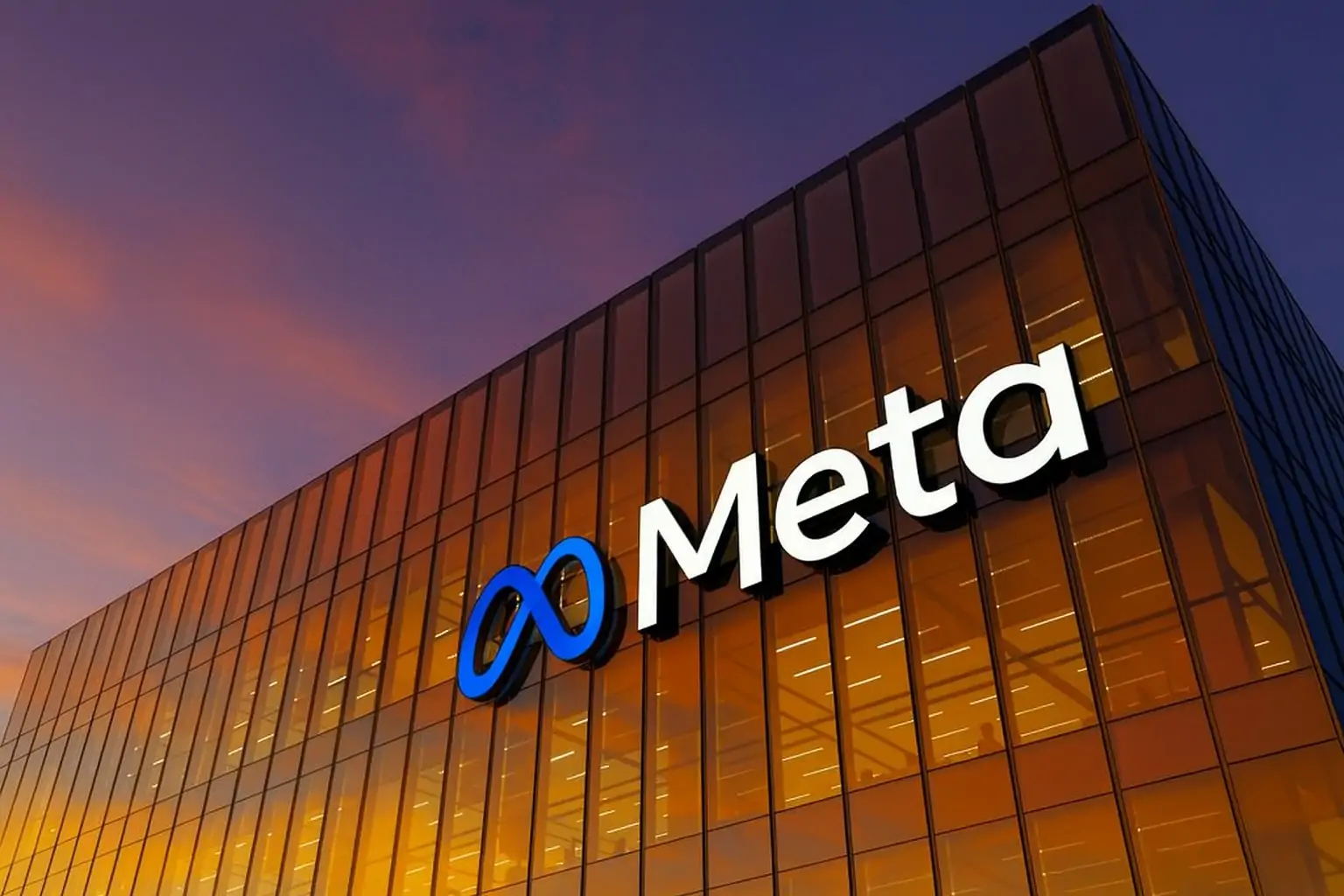Meta Platforms (NASDAQ: META) stock is trading around the $590 mark today after a bruising November slide that has officially pushed the name into “bear market” territory—more than 20% below its recent highs. [1]
At the same time, the news flow around Meta has rarely been louder:
- A Spanish court has ordered Meta to pay €479 million (~$552 million) to local digital media companies. [2]
- Spain is also launching a parliamentary probe into alleged hidden tracking of Android users by Meta’s apps. [3]
- Meta’s legendary chief AI scientist Yann LeCun is leaving to start a new AI company, with Meta as a partner. [4]
- Wedbush has added Meta to its “Best Ideas” list with a $920 price target, implying hefty upside from here. [5]
- Big institutions such as Mitsubishi UFJ Asset Management have quietly increased their stakes in META. [6]
Below is a detailed look at what’s moving Meta stock today, November 20, 2025, and what it could mean for investors.
Meta stock today: price, performance and valuation snapshot
As of today, META is changing hands around $590 per share, down from an all‑time high near $796 hit in August and more than 20% below the late‑October peak around $759. That drop puts the stock firmly into bear‑market territory by the classic definition. [7]
Key current metrics from recent market data and filings: [8]
- Last close (Nov. 19, 2025): $590.32
- 12‑month range: ~$479.80 – $796.25
- Market cap: ≈ $1.5 trillion
- Trailing P/E: roughly 26x
- P/E/G: about 1.25
- Balance sheet: low leverage (debt‑to‑equity ~0.15) and strong liquidity (current ratio ~2x)
The pullback has been steep and relatively fast. Technical analysts note that META has: [9]
- Broken below long‑term uptrend lines and all major moving averages
- Seen its 14‑day RSI drop into the low‑20s, a level often associated with oversold conditions
- Declined on 7 of the past 10 sessions, with volatility around 2–3% per day
In short: the fundamental story is still strong, but the chart looks battered, and traders are split over whether this is an opportunity or a “falling knife.”
1. Spanish court hits Meta with €479M fine – a fresh regulatory overhang
The most market‑sensitive headline today is from Madrid. A Spanish commercial court has ordered Meta to pay €479 million (about $552 million) in compensation to 87 digital media publishers and news agencies. [10]
According to the ruling: [11]
- Meta breached the EU’s General Data Protection Regulation (GDPR) by using personal data for behavioral advertising on Facebook and Instagram without a valid legal basis.
- The court also found unfair competition in Spain’s online advertising market, saying Meta gained a “significant competitive advantage” by processing data unlawfully.
- The €479 million is tied to an estimated €5.3 billion in advertising profits Meta earned between 2018 and 2023 while using the invalid data processing basis.
- The ruling can be appealed, and Meta has not yet publicly commented.
Why this matters for META stock
- Direct financial impact
- Even for a $1.5T company, a half‑billion‑dollar penalty is not trivial, but it’s manageable relative to Meta’s quarterly net income (which would have been about $18.6B in Q3 excluding a special tax charge). [12]
- Precedent risk
- Spain is not the only European country scrutinizing Meta’s advertising and data practices. The ruling explicitly references GDPR breaches, and similar claims are already being explored in France. [13]
- If other jurisdictions copy Spain’s reasoning, the cumulative exposure could be much larger than this single case.
- Ad ecosystem and competitive position
- The court essentially argues that Meta’s powerful ad business was partly built on unlawful data use, which may embolden regulators and rivals who want to curb Meta’s dominance in digital ads.
For investors, the fine is less about today’s cash outflow and more about the direction of travel: Europe is still tightening the screws on Meta’s business model.
2. Spain’s Android tracking probe deepens privacy worries
The court ruling lands just one day after Spain’s government announced a parliamentary investigation into Meta’s alleged use of a hidden mechanism to track Android users’ web activity. [14]
Key points from Spain’s latest probe: [15]
- The investigation follows international research suggesting Meta tracked Android device users across the web via Facebook and Instagram without proper consent.
- Prime Minister Pedro Sánchez said publicly that in Spain, “the law is above any algorithm or platform,” framing the move as a defense of citizens’ rights.
- Meta may have violated multiple EU frameworks, including GDPR, the ePrivacy Directive, the Digital Markets Act (DMA) and the Digital Services Act (DSA).
- Meta says it takes privacy seriously and will cooperate with Spanish authorities.
Market‑oriented coverage notes that the new probe has coincided with another leg down in the stock, with some chart watchers highlighting that META is now sliding toward support in the $575–$565 zone after breaking key moving averages. [16]
Takeaway for investors:
- The headline risk around privacy in Europe is clearly not over.
- Even if fines remain manageable, ongoing political and regulatory hostility can cap multiple expansion and add noise to the story just as Meta asks investors to fund a massive AI capex cycle.
3. EU moves to delay “high‑risk” AI rules – a mixed but mostly positive signal
On the regulatory front, not everything is a negative. In Brussels, the European Commission has proposed delaying enforcement of some “high‑risk” AI rules under the EU AI Act from August 2026 to December 2027, and bundling several tech regulations into a “Digital Omnibus” simplification package. [17]
For Meta, the relevant bits are: [18]
- Enforcement of the strictest AI rules (covering biometric ID, credit scoring, hiring decisions, certain health and law‑enforcement uses, etc.) would be pushed back by more than a year.
- Proposed tweaks to GDPR and related laws could allow companies such as Meta, Google and OpenAI to use Europeans’ personal data to train AI models, subject to conditions.
If approved, this gives Meta a bit more regulatory breathing room to:
- Train large models like Llama on broader datasets.
- Deploy AI‑driven ad and recommendation tools in Europe without racing against a 2026 compliance deadline.
However, this doesn’t cancel other EU actions (like Spain’s court ruling) and could easily change during political negotiations. Investors should view it as a near‑term tailwind, not a free pass.
4. Yann LeCun’s exit: leadership shock or smart partnership?
Another major theme swirling around Meta today is its AI leadership shake‑up. Yann LeCun, Meta’s influential chief AI scientist, has announced that he will leave at the end of 2025 to launch a new AI startup focused on Advanced Machine Intelligence (AMI). [19]
From Reuters’ reporting and LeCun’s own statements: [20]
- LeCun joined Meta (then Facebook) in 2013 and founded FAIR (Facebook AI Research), helping turn Meta into a global AI heavyweight.
- Over 12 years he served as FAIR’s founding director and then as chief AI scientist, shaping breakthroughs in deep learning and computer vision that power Meta’s ad systems and recommendation engines.
- His new startup will pursue AMI, a long‑term research agenda he’s developed with FAIR and New York University colleagues.
- Importantly, Meta will be a partner in the new venture, signaling an ongoing strategic relationship rather than a clean break.
Investors are debating how to interpret this:
- Bearish angle: Losing a “godfather of deep learning” at a moment when AI talent is the most strategic resource on earth can look like a brain‑drain risk, especially while rivals like OpenAI, Google and Anthropic are fighting for the same people.
- Bullish angle: The fact that Meta is backing LeCun’s startup suggests this could become a satellite research lab feeding long‑range innovation back into Meta’s ecosystem, while internal teams focus on nearer‑term monetization.
Either way, the timing adds to the sense that Meta’s AI story is entering a new phase—with more external partnerships, higher capex and more scrutiny on how much profit investors get in return.
5. Q3 earnings recap: strong business, heavier AI spending
To understand why the stock has sold off so sharply, it helps to rewind to Q3 earnings on October 29. Meta reported: [21]
- Revenue: $51.2B, up about 26% year‑over‑year, beating expectations.
- EPS: $7.25 vs. consensus around $6.7, helped by strong ad demand.
- Underlying net income: would have been ~$18.6B if not for a nearly $16B one‑time tax charge linked to new U.S. legislation, which dragged reported profit down to $2.7B.
- Net margin: still an impressive ~31% despite higher costs.
- Guidance: Q4 revenue projected at $56–59B, broadly in line with Wall Street estimates.
The real shock for investors was spending:
- Meta raised the 2025 capex outlook to $70–72B, from a prior range of $66–72B.
- Management signaled “notably larger” capital expenditures in 2026, largely for AI data centers and infrastructure, as part of a push toward “superintelligence.” [22]
- Costs grew faster than revenue in Q3 (32% vs. 26%), as Meta ramped hiring and hardware purchases for AI. [23]
CEO Mark Zuckerberg argued that front‑loading this spend is the right strategy so Meta is ready if superintelligence arrives sooner than expected; if AI progress is slower, the company can use surplus compute to accelerate its existing business or slow capex later. [24]
For many investors, that pitch sparked AI‑bubble jitters:
- Some prominent investors, including Michael Burry, have warned that mega‑cap “hyperscalers” like Meta may be under‑depreciating AI infrastructure, temporarily inflating earnings. [25]
- Option‑market data and analyst commentary now reflect growing concern that AI capex might overshoot actual monetization if demand for AI services normalizes. [26]
The result: Meta’s stock gapped down after earnings and has kept sliding, even as the core ad business remains very healthy.
6. Sentiment watch: bear market slide, Cantor cut and Wedbush’s bullish $920 target
Retail and technical sentiment
A widely read Stocktwits piece published in the early hours of Nov. 20 highlights that META is now down over 22% from its recent high and firmly in a short‑term downtrend, with the 14‑day RSI around 23, signaling oversold conditions. [27]
The same article notes: [28]
- Many retail traders remain undecided, with sentiment on the platform described as “neutral.”
- Some see META as a “screaming buy” given the oversold readings and long‑term AI potential, while others fear it could fall toward $400 if AI spending disappoints.
- Technically, the stock sits below its 50‑, 100‑ and 200‑day moving averages, projecting weakness until it can reclaim the $615–$620 area, where broken support and key EMAs cluster.
Cantor Fitzgerald trims target
Adding to the cautious tone, Cantor Fitzgerald this week cut its price target on META from $830 to $720, while keeping an Overweight rating. The firm specifically cited higher operating expenses tied to new multibillion‑dollar cloud partnerships and AI infrastructure commitments that could weigh on 2026 earnings. [29]
Wedbush: META is now a “Best Idea” with 56% upside
Balancing that, Wedbush Securities has just added Meta to its “Best Ideas” list and is sticking with a $920 price target. [30]
Based on recent trading around $590, that implies roughly 56% potential upside over the next 12 months if its thesis plays out. Wedbush’s bullish case, supported by recent coverage, rests on: [31]
- Meta’s scale and leadership in social ads, powered by AI‑driven targeting that continues to deliver strong ROI to marketers.
- The monetization runway in Reels, WhatsApp and Threads, which are still in earlier stages of their ad‑load and commerce journey.
- The view that Meta’s AI infrastructure build‑out is an asset, not just a cost, positioning the company to compete as both a consumer platform and an AI platform provider.
Across Wall Street more broadly, consensus data still shows the majority of analysts rating META a Buy or Strong Buy, with an average target in the low‑ to mid‑$800s, well above today’s price. [32]
7. Big money moves: Mitsubishi UFJ and institutional positioning
Fresh 13F‑based reporting today shows that Mitsubishi UFJ Asset Management Co. Ltd. has lifted its stake in Meta by 6.6% in Q2, to around 4.28 million shares, worth roughly $3.16 billion at recent prices. That makes META the firm’s 5th‑largest position, about 2.5% of its portfolio, and roughly 0.17% of Meta’s shares outstanding. [33]
That article also highlights that: [34]
- Roughly 80% of Meta’s float is now in institutional hands, reflecting how heavily owned the name is by funds.
- A mix of smaller wealth managers and RIAs have also been adding META in recent quarters, even as the stock pulled back.
On the other side, insider‑trading disclosures show some executives, including CTO Andrew Bosworth, selling shares in recent months—moves that may be partly routine diversification after a long run‑up, but which some traders still treat as a caution signal. [35]
Net‑net, the ownership picture looks like this:
- Institutions: mostly long and still adding on weakness in some cases.
- Insiders: selectively taking profits after massive gains.
- Retail: split between dip‑buyers and skeptics, with social sentiment volatile but not yet deeply bullish or bearish.
8. Regulatory backdrop outside Europe: FTC defeat and global policy trends
While Europe is tightening privacy enforcement, Meta caught a major break in the United States this week. On Nov. 18, a federal judge dismissed the Federal Trade Commission’s long‑running antitrust case that sought to force Meta to divest Instagram and WhatsApp. [36]
The court concluded that: [37]
- Meta competes in a broader social media market that includes TikTok and YouTube, rather than a narrow “personal social networking” silo.
- In that broader market, Meta’s share is too low to constitute monopoly power under U.S. antitrust precedent.
This ruling removes a big structural overhang—the risk that Meta might be forced to unwind its core acquisitions. It doesn’t immunize Meta from future competition or regulation, but it does reduce the probability of a court‑ordered breakup in the near term.
Elsewhere, Meta is also facing new content and safety requirements:
- In Australia, the company has announced restrictions that will block under‑16s from using Facebook and Instagram, reflecting mounting global pressure over teen mental health and social media. [38]
For investors, the global regulatory picture is asymmetric:
- The U.S. is proving relatively friendly (or at least less aggressive) on structural breakup.
- Europe and parts of the Asia‑Pacific region are increasingly focused on data, privacy and youth protection, which could constrain growth or force incremental compliance costs.
9. Is Meta stock a buy after the November sell‑off? Bull vs. bear case today
Given all the moving parts, how should investors interpret Meta stock today, on November 20, 2025?
This isn’t investment advice, but here’s how the debate is shaping up.
Bull case in a nutshell
- Core business is firing
- Ads and engagement remain strong, with Q3 revenue up 26% year‑over‑year and robust margins despite high spending. [39]
- AI infrastructure as a long‑term moat
- Meta is building out enormous AI data‑center capacity and has reorganized its efforts under “Superintelligence Labs”, aiming for leadership in open‑source models (Llama) and AI‑powered ads, social and messaging. [40]
- Valuation reset
- After a ~20–22% drawdown, META now trades around 26x trailing earnings, which some bulls view as reasonable for a company growing revenue mid‑20s %, with substantial buybacks and a small but growing dividend. [41]
- Wall Street and institutions still broadly supportive
- Consensus ratings lean strongly Buy, average price targets sit well above current levels, and large institutions are still increasing positions. [42]
Bear case in a nutshell
- AI spending could overshoot
- Meta is committing tens of billions in capex annually for AI with no guarantee that future revenue will justify the investment, especially if the AI boom cools or becomes more commoditized. [43]
- Regulatory drag in key regions
- The Spanish fine, ongoing privacy investigations, and broader European scrutiny show that regulators are still willing to hit Meta where it hurts—data and ads. [44]
- Execution risk in Reality Labs and new products
- The metaverse and AR/VR bets continue to absorb capital, and while Meta has slowed the most aggressive spending here, the path to profitability remains uncertain.
- Crowded ownership & sentiment risk
- With nearly 80% institutional ownership, META is heavily owned; if large funds re‑rate AI infrastructure as riskier, outflows could amplify downside moves. [45]
10. What to watch next for Meta stock
For traders and long‑term investors following META after today’s headlines, key near‑term catalysts include:
- Market reaction to Spain’s €479M fine
- Will investors treat it as a one‑off, or start pricing in a wave of similar claims across Europe?
- Updates on the Android tracking investigation
- Any sign of deeper EU‑level action or coordinated probes would be a negative surprise. [46]
- More detail on Yann LeCun’s new AMI startup and Meta’s role
- Clarity on collaboration, IP ownership and commercial rights will help investors gauge whether this is a partnership opportunity or a talent loss. [47]
- Capex commentary from management and analysts
- Expect every future earnings call to feature tough questions about the return on AI capital and whether capex can moderate in 2026–27. [48]
- Technical levels on the chart
- On many traders’ screens, $575–$565 is now an important support area; a decisive break below may trigger another leg lower, while a reclaim of $615–$620 would be the first sign that bulls are regaining control. [49]
Disclaimer: This article is for informational and journalistic purposes only and is not investment advice. Always do your own research or consult a licensed financial advisor before buying or selling any securities.
References
1. stockinvest.us, 2. www.reuters.com, 3. www.reuters.com, 4. www.reuters.com, 5. www.marketbeat.com, 6. www.marketbeat.com, 7. stockinvest.us, 8. stockinvest.us, 9. stockinvest.us, 10. www.reuters.com, 11. www.reuters.com, 12. www.reuters.com, 13. www.reuters.com, 14. www.reuters.com, 15. www.reuters.com, 16. tradersunion.com, 17. www.reuters.com, 18. www.reuters.com, 19. www.reuters.com, 20. www.reuters.com, 21. www.reuters.com, 22. www.reuters.com, 23. www.reuters.com, 24. www.reuters.com, 25. stocktwits.com, 26. www.reuters.com, 27. stocktwits.com, 28. stocktwits.com, 29. stocktwits.com, 30. www.marketbeat.com, 31. www.marketbeat.com, 32. www.marketbeat.com, 33. www.marketbeat.com, 34. www.marketbeat.com, 35. www.marketbeat.com, 36. ppc.land, 37. ppc.land, 38. www.washingtonpost.com, 39. www.reuters.com, 40. www.reuters.com, 41. stockinvest.us, 42. www.marketbeat.com, 43. www.reuters.com, 44. www.reuters.com, 45. www.marketbeat.com, 46. www.reuters.com, 47. www.reuters.com, 48. www.reuters.com, 49. tradersunion.com








